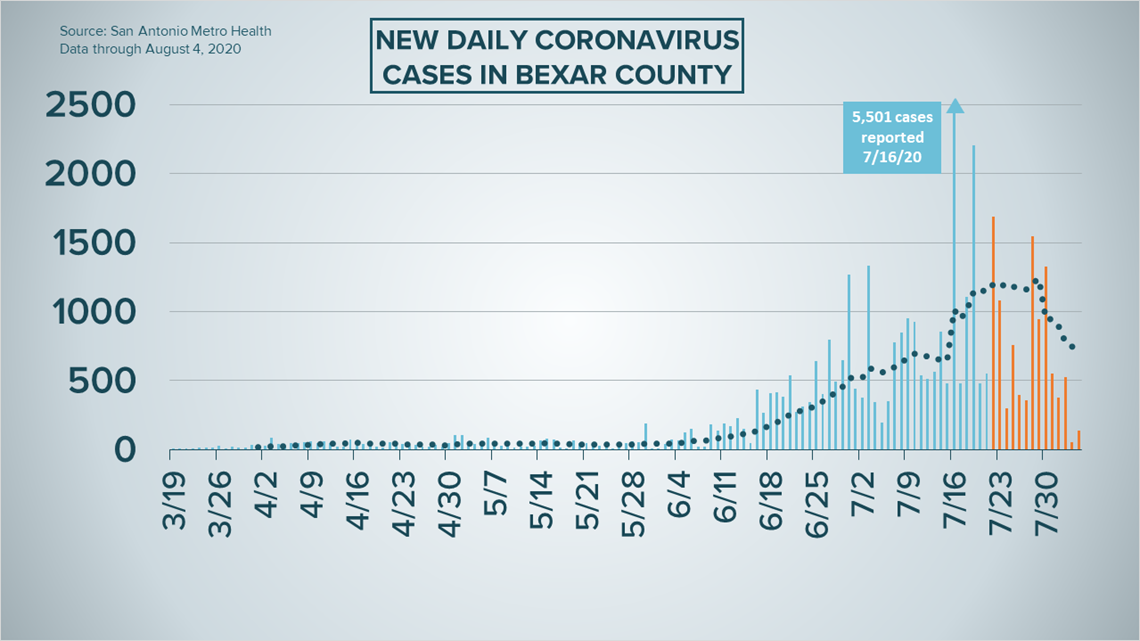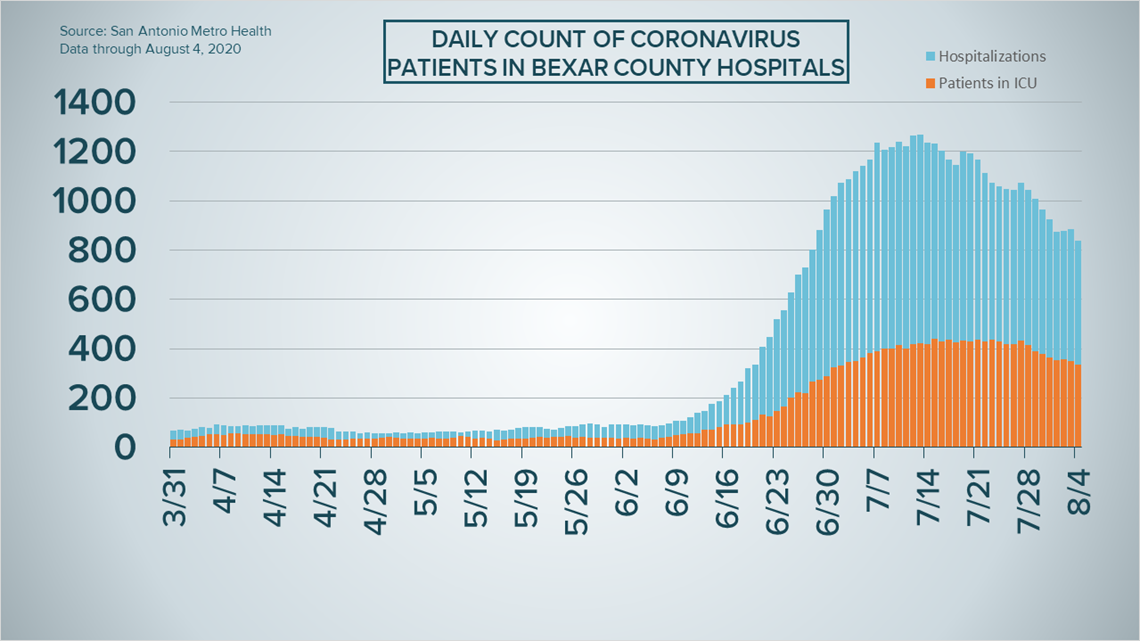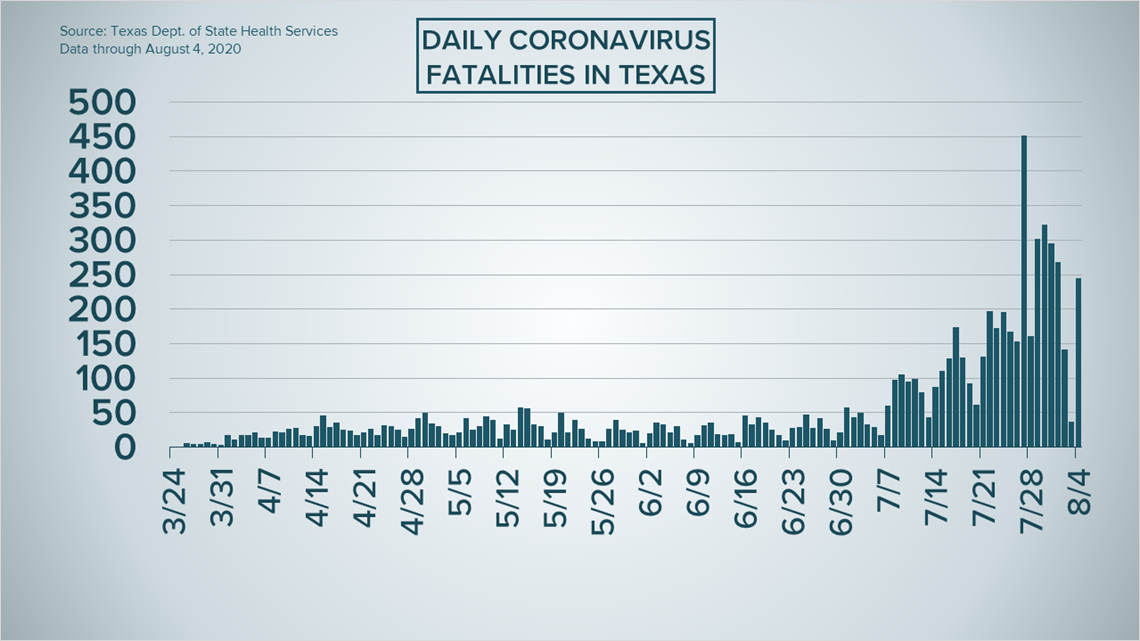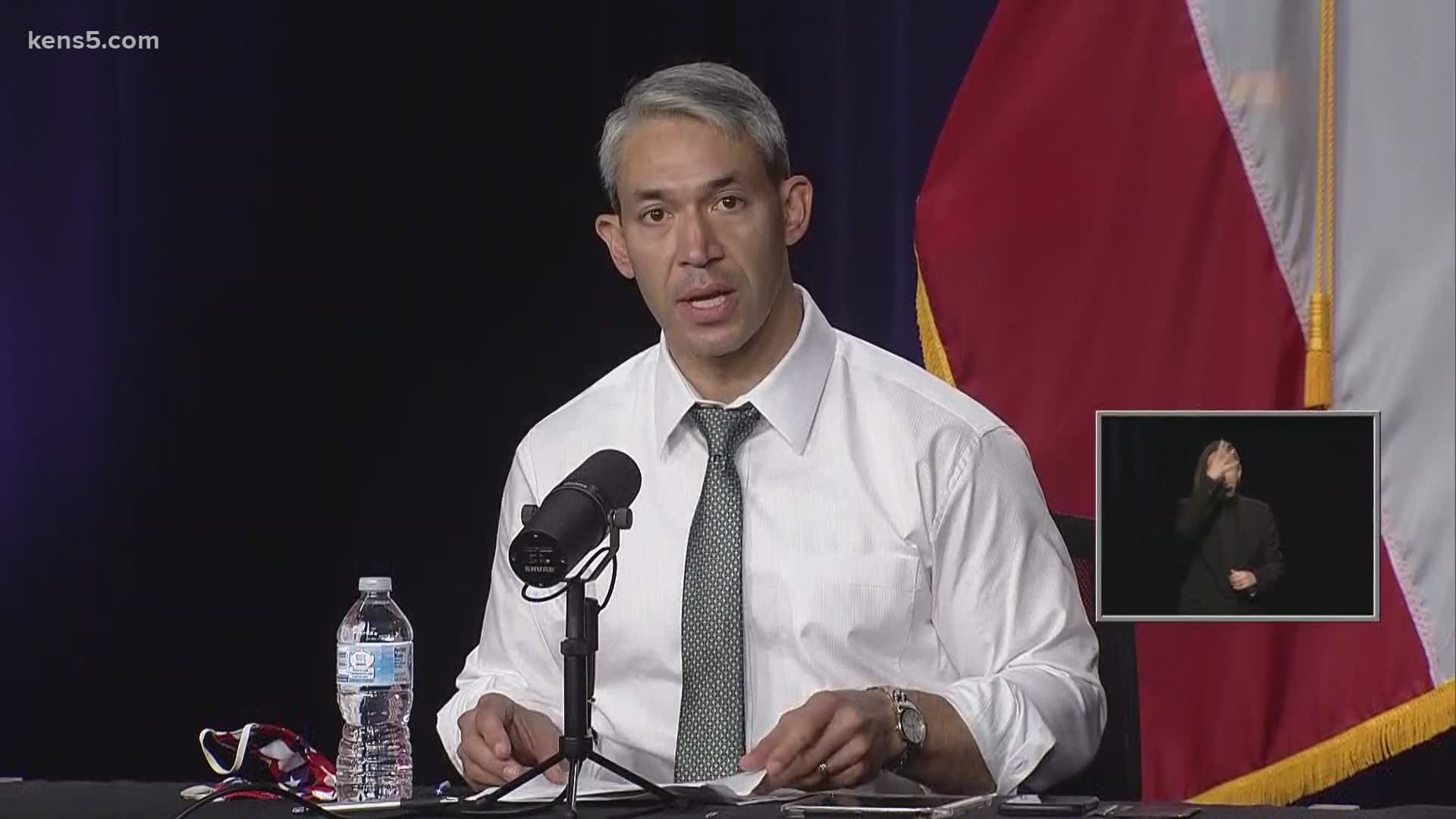SAN ANTONIO — We're tracking the latest numbers from the coronavirus pandemic in San Antonio and across Texas. Here are the latest numbers reported by Bexar and surrounding counties:
- Bexar County: 136 new cases were reported Tuesday, bringing the total number for the county to 41,274. The county death toll, meanwhile, rose to 380 after 10 additional fatalities were reported.
- Comal County: The county reported 74 new cases on Tuesday, along with three more virus-related deaths. There have been a total of 2,231 cases of COVID-19 in the county, while the death toll stands at 59. County officials also said there are 806 active coronavirus cases, while 1,366 residents have recovered.
- Hays County: The most recent coronavirus figure from Hays County show 26 new cases in the county and one additinal virus-related death. As of Monday evening, there were a total of 4,893 lab-confirmed cases in the county (2,884 of which were active) while the death toll stodd at 29. 107 county residents have been hospitalized with the virus.
How Bexar County is trending
We're tracking how many coronavirus cases are confirmed in Bexar County each day from the time San Antonio Metro Health began reporting cases more than five months ago. Graphing those daily case numbers along a 14-day moving average provides an accurate picture of the curve in the San Antonio area and the direction we're heading amid the coronavirus.
On Tuesday, Mayor Ron Nirenberg reported an additional 136 cases of COVID-19 in Bexar County, the second straight day with a relatively small case total as Metro Health continues its transition to a new state-hosted database. In all, 41,274 county residents have been diagnosed with COVID-19.


Nirenberg reported an additional 10 coronavirus-related deaths in the county, noting that they stretch as far back as the end of April. A total of 380 Bexar County residents have lost their lives to coronavirus complications.
Hospitalizations trended downward once again, with 838 county residents receiving treatment for COVID-19 on Tuesday. The number of patients in intensive care (336) and using ventilators for breathing assistance (234) are also down from Monday.
Nirenberg, however, said the local hospital system remains "under severe stress" during the pandemic, as 26% of all admissions are related to the coronavirus.


Coronavirus in Texas
Texas health authorities on Tuesday reported an additional 9,167 cases of COVID-19, for a total of 451,181. It's the sixth time in eight days the state has reported at least 8,000 new daily cases as the trends from late July continue into the start of August.


Meanwhile, the state also reported 245 more deaths from complications stemming from the coronavirus. The figure is a return to last week's high daily fatality counts after the last two days' totals were both under 150. In all, 7,261 Texans have lost their lives to the coronavirus during the ongoing pandemic.


Hospitalizations went down for Texas on Tuesday, however; 8,674 are reported to be receiving treatment for COVID-19, which is 145 fewer patients than the day prior.
Latest Coronavirus Headlines
- UT-Austin study shows majority of schools could see a coronavirus case in their first week
- Gov. Abbott announces opening of McAllen Convention Center as a health care facility
- US nears 5 million coronavirus cases, far outpacing other countries
- Can you get the coronavirus from secondhand smoke?
- Here's a list of retailers requiring face coverings for customers
- China, WHO in talks on plans to trace coronavirus origin
- Progress slow on virus relief bill as negotiations continue
- Clearing up the confusion: Leaders explain duplicate coronavirus cases and high death toll from state
- Trump nursing home plan limits supply of free COVID-19 tests
- San Antonio man says convalescent blood plasma saved his life; calls for more donations
Coronavirus symptoms
The symptoms of coronavirus can be similar to the flu or a bad cold. Symptoms include fever or chills, cough, shortness of breath or difficulty breathing, fatigue, muscle or body aches, headache, new loss of taste or smell sore throat, congestion or runny nose, nausea or vomiting and diarrhea, according to the Centers for Disease Control.
Most healthy people will have mild symptoms. A study of more than 72,000 patients by the Centers for Disease Control in China showed 80 percent of the cases there were mild.
But infections can cause pneumonia, severe acute respiratory syndrome, kidney failure, and even death, according to the World Health Organization. Older people with underlying health conditions are most at risk.
On June 25, the CDC expanded the list of groups at a higher risk of severe illness due to coronavirus.
Experts determined there was consistent evidence these conditions increase a person's risk, regardless of age:
- Chronic kidney disease
- COPD (chronic obstructive pulmonary disease)
- Obesity (BMI of 30 or higher)
- Immunocompromised state (weakened immune system) from solid organ transplant
- Serious heart conditions, such as heart failure, coronary artery disease, or cardiomyopathies
- Sickle cell disease
- Type 2 diabetes
The CDC believes symptoms may appear anywhere from two to 14 days after being exposed.
Human coronaviruses are usually spread...
- Between people who are in close contact with one another (within about 6 feet).
- Through respiratory droplets produced when an infected person coughs, sneezes or talks. These droplets can land in the mouths or noses of people who are nearby or possibly be inhaled into the lungs.
- Some recent studies have suggested that COVID-19 may be spread by people who are not showing symptoms.
Help stop the spread of coronavirus
- Stay home when you are sick.
- Eat and sleep separately from your family members
- Use different utensils and dishes
- Cover your cough or sneeze with your arm, not your hand.
- If you use a tissue, throw it in the trash.
Lower your risk
- Wash your hands often with soap and water for at least 20 seconds. If soap and water are not available, use an alcohol-based hand sanitizer.
- Avoid touching your eyes, nose, and mouth with unwashed hands.
- Avoid close contact with people who are sick.
- Clean and disinfect frequently touched objects and surfaces.
- The CDC recommends wearing a mask or cloth face covering if you have to be out due to an essential service or essential activity such as going to the grocery store.
- If you are 60 or over and have an underlying health condition such as cardiovascular disease, diabetes or respiratory illnesses like asthma or COPD, the World Health Organization advises you to try to avoid crowds or places where you might interact with people who are sick.

